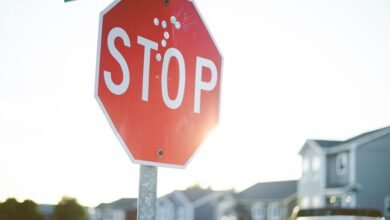Network Security and Regulation Division 8335542253 2029756900 8325325297 2028311877 3475542847 8183083393

As you explore the intricacies of the Network Security and Regulation Division, it’s crucial to understand its pivotal role in shaping cybersecurity landscapes. The division’s commitment to data protection and incident response frameworks highlights the need for robust regulatory compliance. Yet, evolving cyber threats demand continuous adaptation. What strategies are being implemented to ensure resilience? The answers may reveal significant insights into the future of network security and its impact on compliance.
Understanding Network Security: Fundamentals and Best Practices
As you navigate the complexities of network security, understanding its fundamentals is crucial to safeguarding your systems effectively.
Recognize potential network threats and implement robust security protocols. Utilize encryption techniques for data protection, conduct vulnerability assessments, and develop a solid incident response plan.
Establish access controls and adhere to security frameworks to manage risks, ensuring your network remains resilient against evolving cyber challenges.
The Role of Regulation in Cybersecurity
Regulation plays a pivotal role in shaping the landscape of cybersecurity, influencing how organizations approach their security protocols and compliance requirements. By establishing robust regulatory frameworks, authorities mitigate risks and ensure data integrity.
However, organizations often face compliance challenges, navigating complex mandates that can stifle innovation. Balancing regulatory adherence with the desire for operational freedom is essential for effective cybersecurity strategies.
Key Initiatives of the Network Security and Regulation Division
While navigating the complex landscape of cybersecurity, the Network Security and Regulation Division focuses on several key initiatives designed to enhance security protocols across various sectors.
These include rigorous data protection strategies, comprehensive threat assessments, and efficient incident response frameworks.
Future Trends in Network Security and Compliance
The evolving landscape of technology and increasing sophistication of cyber threats necessitate a forward-looking approach to network security and compliance.
You’ll see AI advancements enhancing threat detection, while privacy regulations shape compliance frameworks.
Embracing a zero trust model, organizations will prioritize incident response, cloud security, and data encryption, ensuring robust defenses against emerging vulnerabilities and protecting user freedoms in a digital age.
Conclusion
In a world where you’d think cyber threats would take a day off, the Network Security and Regulation Division proves that vigilance is a full-time job. You can’t just hope for the best; implementing robust security protocols and staying compliant is essential. Ironically, while technology evolves, so do the threats, making your role in safeguarding digital spaces more critical than ever. So, buckle up—it’s a wild ride in cybersecurity, and you’ve got a front-row seat!




